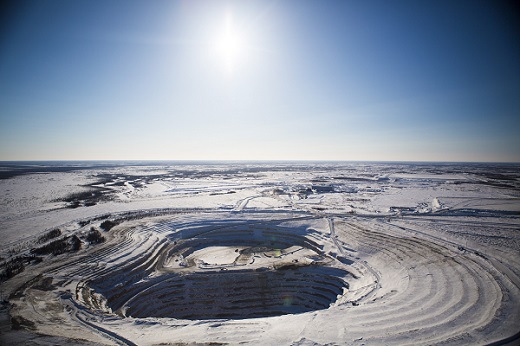
Mountain Province reported increased net losses for the latest quarter as prices keep on dropping in a “challenging market”.
The Canadian miner today (7 November) announced a net loss of $13.6m for the three months to 30 September, following on from a $4.7m loss in Q2 (all figures are in US dollars).
“In Q3 2024 our sales achieved 100 per cent sell-through with no unsold stock held at the end of September and a higher average selling price than the three preceding quarters,” said Reid Mackie, VP sales and marketing at Mountain Province.
The average price per carat was, however, down 21 per cent on a year ago – from $95 to $75.
The company sold a 679,599 carats were sold for $50.8m, compared to 478,653 carats in Q3 2023 for $45.3m. Year-on-year the number of carats sold was up almost 30 per cent, but revenue increased by just 12 per cent.
Adjusted EBITDA was $12.5m and loss from mine operations was $8m.
As for operations at the Gahcho Kue mine (pictured), the number of tonnes of ore treated increased 10 per cent year-on-year, but the number of carats recovered fell by 10 per cent.
CEO Mark Wall explained that this was “driven by planned lower grade in Q3 and unplanned lower grade in March and early Q2 of 2024”.
He said that while the diamond market had been disappointing, he was optimistic that the price environment would recover during 2025 and that it would be followed by a very strong production year in 2026.
Source: IDEX

